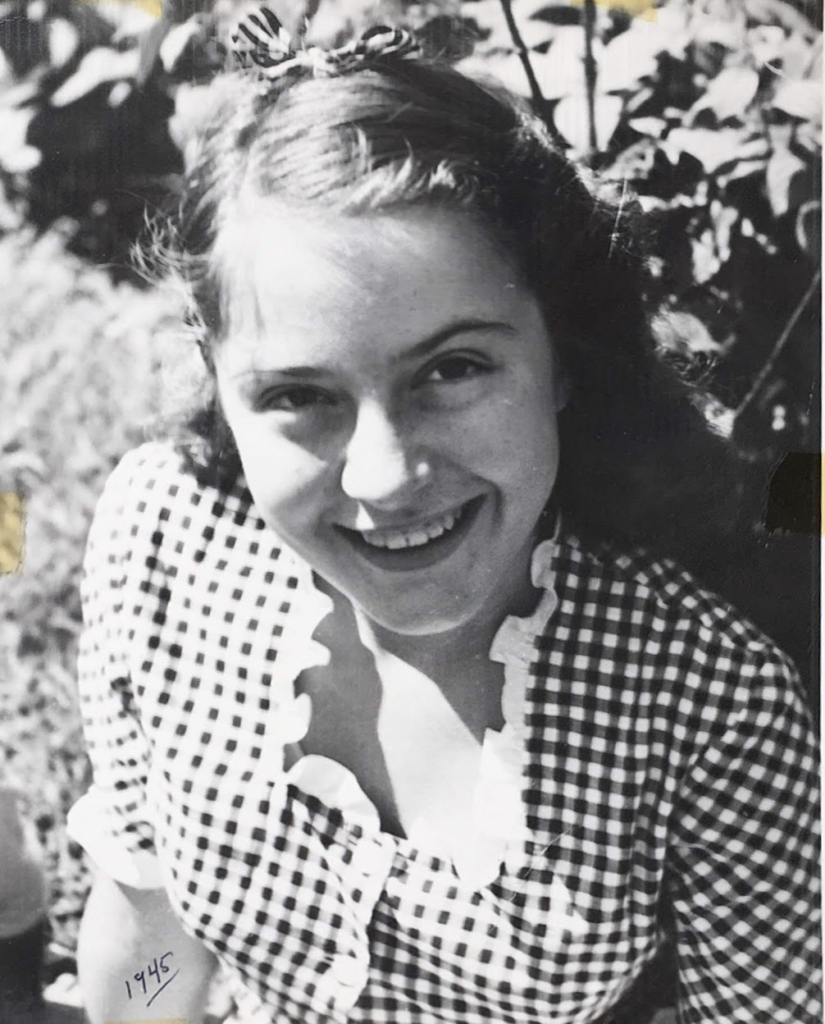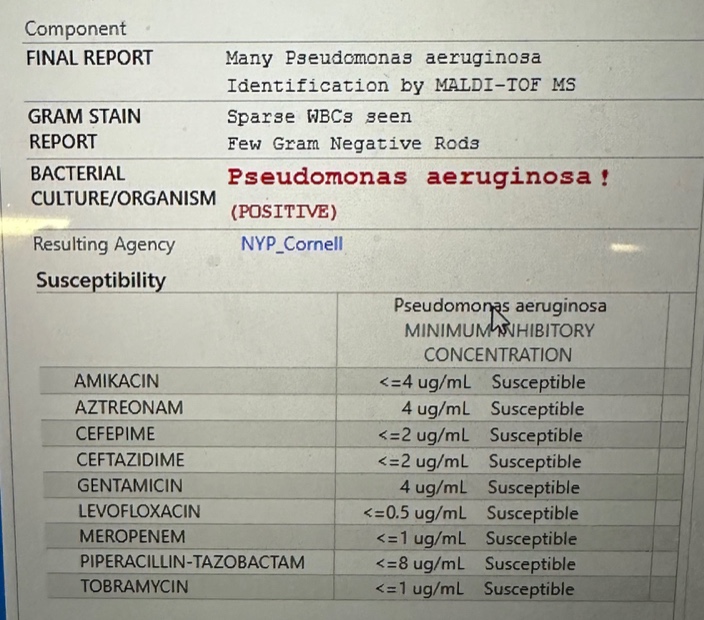An ongoing dialogue on HIV/AIDS, infectious diseases,
May 11th, 2024
Just in Time for Mother’s Day, Some Admiration and Gratitude
 As I’ve written here before, I’m in awe of my mother — a smart woman who doesn’t celebrate Mother’s Day. So in place of celebrating, I’m going to use the holiday anyway as an excuse to share an event that highlights her strengths and resourcefulness. It has an ID theme eventually, so stick around to the end.
As I’ve written here before, I’m in awe of my mother — a smart woman who doesn’t celebrate Mother’s Day. So in place of celebrating, I’m going to use the holiday anyway as an excuse to share an event that highlights her strengths and resourcefulness. It has an ID theme eventually, so stick around to the end.
By way of background, my mother regularly uses New York City’s public transportation system, both the subways and buses. No big deal, one might think, so do umpteen million others. But the reason I mention it is because my mother is old. How old? Just look at me, and do the math for a good approximation. To be specific, she’s about to start her tenth decade.
Plus, she’s been living on her own since my father died, and continues to take care of pretty much everything in her life. This includes food shopping, cooking for herself and cleaning, and managing her surprisingly busy social and academic life. (She has a recent volunteer gig as a teacher, newsletter editor, and student.) She does these things without making a big deal out of it, so my brother, sister, and I take it for granted sometimes, overlooking how remarkable this independence is.
But a few months ago, I received a call that my mother had fallen while getting on the bus and was receiving care in an emergency room. She had no broken bones — thank goodness — but the fall took a sizable chunk of flesh from her left leg. Someone witnessing the injury thought she might need a tourniquet to control the bleeding.
We’ve all seen what falls can do. And it’s not just to older people — I’ve taken care of a man in his 30s whose life was irreversibly changed after falling from a ladder in his kitchen, striking his head, breaking his ankle, and triggering a series of neurologic and infectious complications that left him permanently impaired.
(I’m terrified of ladders. My wife thinks I’m a wimp, but I know better.)
Of course when it comes to falls, older people are especially vulnerable. Neuropathy, muscle weakness, vestibular instability, visual impairment, osteoporosis, and arthritis all come together to make falls way more common — and treacherous — in us as we age. The falls cause physical and psychological trauma that can profoundly weaken a person, leading to an amplifying cycle of debilitation and complications and dependency.
Think how many times you have heard, “He was OK before the fall …” or “Ever since the hip fracture, she’s never been the same.” Shudder.
In my conversations with my mother after the event, the tone of fragility in her voice was one I had never heard. Plus, she was barely leaving her apartment.
But rally she did:
- She openly shared with her family and friends how hard this process was — not an easy disclosure for a person generally independent and hesitant to reach out for help.
- From a skilled and incredibly kind plastic surgeon (Thank you, Dr. Schwartz!), she learned how to monitor and dress her sizable wound each day. I watched her do it, and think she could have had a career as a wound care nurse had she not been a journalist. What talent!
- She gradually increased her ability to get around again, first going for short walks outside when the weather was good, then starting to shop again on her own. She’s now back on public transportation.
- She managed to take a week of levofloxacin without destroying her tendons.
So we finally come to the ID part of this post. When the healing seemed to be slowing, with increased drainage, her plastic surgeon sent a wound culture, results of which he shared with me in this screen shot:

“Unless you have another thought, I’m going to start levofloxacin,” he wrote to me. Yes indeed, good plan — it was a superinfection of this widely open wound. Perhaps it was selected by the previous course of cephalexin she took. Or maybe it was just a “gift” from the flora of the New York City streets.
Ever curious, my mother had two questions, my answers in brackets:
Is this the infamous “flesh eating” bacteria? [No, that’s most often strep.] If this is a pseudo (meaning fake) monas, what’s the real monas like? [I have no idea.]
These are excellent questions, especially the second one.
I’m happy to report that with local care, and antibiotics, and time, the wound has ever-so-slowly healed. She’s “graduated” (her term) to just using a small bandage. No more visits to Dr. Schwartz.
So Happy Mother’s Day, Mom — glad you’re getting better, you did amazingly well. And be careful on those city buses!


Good one, Paul. I hope you’re not in trouble with your mom for sharing her “vulnerability” story.
On the contrary. “Why do I need a celebratory brunch for Mother’s Day when I can get this?”
That’s what she told me!
-Paul
Pseudomonas [soo′′do-mo′nəs]
From the Greek pseudo (“false”) + monas (“unit”). In 1894, German botanist Walter Migula coined the term Pseudomonas for a genus he described as, “Cells with polar organs of motility. Formation of spores occurs in some species, but it is rare.”
https://wwwnc.cdc.gov/eid/article/18/8/ET-1808_article
Thanks for sharing Paul. Brunch or no brunch, sending respect and gratitude to your mom and all of the wonderful moms out there!!!
Sorry to hear of your mom’s travail.
Happy to here of the, hopefully, uneventful resolution.
Your mom and dad are missed as our neighbors on Craryville Road!
Keep fearing those ladders, Paul. I have a healthy fear of ladders — and basement stairs! — ever since I worked on a brain injury unit. I actually tell patients if they are planning a party, or even just planning to drink alcohol at home, to lock the door to their basement stairs. I hope I am as independent as your Mom when I enter my 10th decade! 🙂
Amen, mama!
I just wanted to share, that I have used a lot of fluoroquinolones in older folk (diabetic and vascular wounds)–who seem to “sail” through the FQ….but I have had noted much more toxicity in younger patients who get FQ for TB–fatigue, joint pain–all of which ceases quickly with dc FQ. So, I am not surprised.
I do always look forward and enjoy reading and learning from your “ HIV and ID Observations “ writings and opinions , but I do seem to enjoy more when you write from your heart . Your Mom must certainly be very proud of you as a loving , caring , compassionate human being , physician and son.
Very interesting (as usual), and informative and full of love. Thanx for sharing it.
Here is somemore info about Pseudomonas (from wikipedia). The real “monas” are perhaps all those flagellate unicellular organisms often seen in pond water.
“Like most bacterial genera, the pseudomonad last common ancestor lived hundreds of millions of years ago. They were initially classified at the end of the 19th century when first identified by Walter Migula. The etymology of the name was not specified at the time and first appeared in the seventh edition of Bergey’s Manual of Systematic Bacteriology (the main authority in bacterial nomenclature) as Greek pseudes (ψευδής) “false” and -monas (μονάς/μονάδος) “a single unit”, which can mean false unit; however, Migula possibly intended it as false Monas, a nanoflagellated protist[9] (subsequently, the term “monad” was used in the early history of microbiology to denote unicellular organisms). Soon, other species matching Migula’s somewhat vague original description were isolated from many natural niches and, at the time, many were assigned to the genus. However, many strains have since been reclassified, based on more recent methodology and use of approaches involving studies of conservative macromolecules.[10]
Siempre es un placer, al menos, sonreír con lo que escribe en sus cartas. Pero en este caso las preguntas de su madre me han arrancado una carcajada…muy dulce!! Muchas gracias
Thanks for sharing Paul. sending respect and gratitude to your mom and all of the wonderful moms out there!!! Visit Us Telkom University Jakarta
I would haveused turmeric powder, topically with a gauze dressing on the wound and ignored the culture.
The ancient practice of Turmeric for wound healing has become more accepted. I first heard about it when the patent that some Indian physicians had obtained in late 90s was successfully fought by the India government based on ancient practice, well documented in old manuscripts.
I have personally used it in complex wounds. Diabetic and non-diabetic. In the non-diabetic there is initial burning for a few seconds, which can be avoided by using topical lidocaine in the non-diabetic that is not a problem.